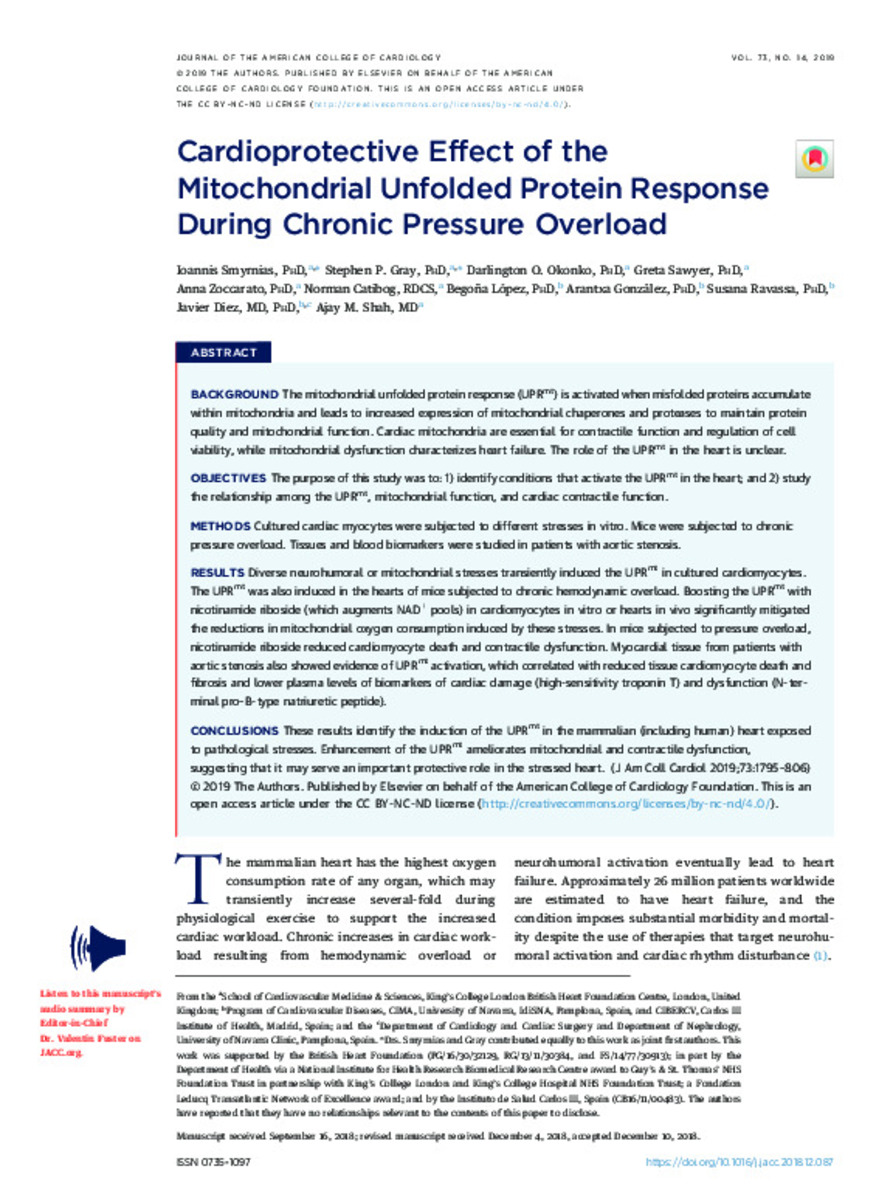Cardioprotective effect of the mitochondrial unfolded protein response during chronic pressure overload
Palabras clave :
Cardiomyocyte
Heart
Mitochondria
Pressure overload
Unfolded protein response
Fecha de publicación :
2019
Nota:
THIS IS AN OPEN ACCESS ARTICLE UNDER
THE CC BY-NC-ND LICENSE ( http://creativecommons.o rg/licenses/by-nc-nd/4.0/ )
Cita:
Smyrnias, I. (Ioannis); Gray, S.P. (Stephen P.); Okonko, D. (Darlington); et al. "Cardioprotective effect of the mitochondrial unfolded protein response during chronic pressure overload". Journal of the American College of Cardiology. 74 (14), 2019, 1795 - 1806
Aparece en las colecciones:
Estadísticas e impacto
0 citas en

0 citas en

Los ítems de Dadun están protegidos por copyright, con todos los derechos reservados, a menos que se indique lo contrario.







